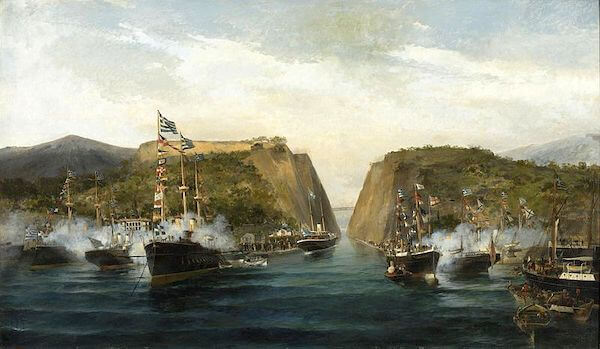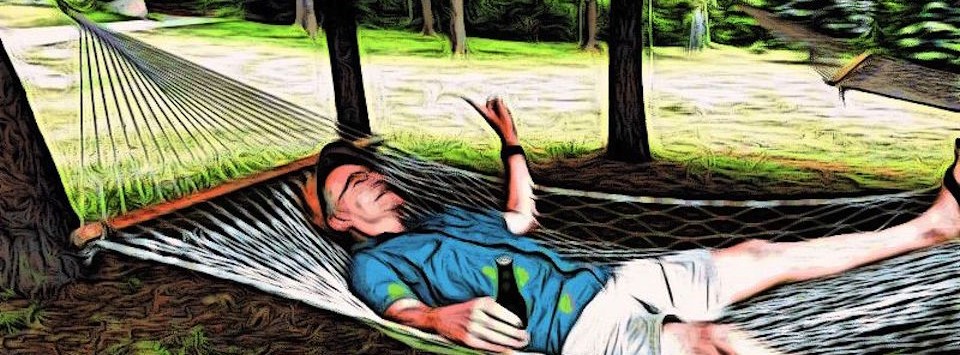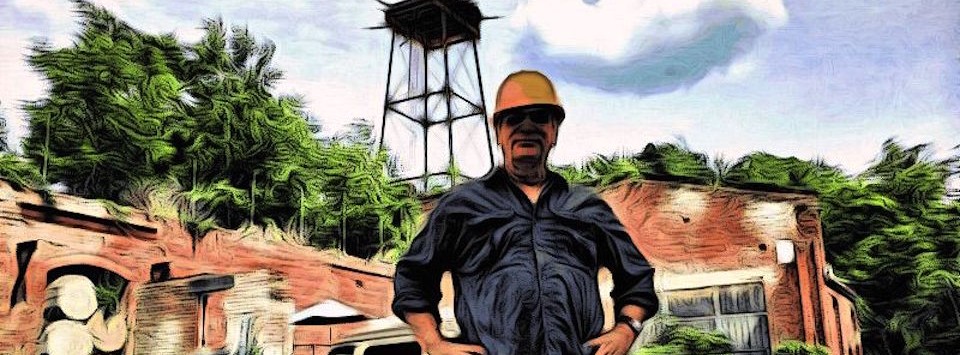Underground Sleeping Situation
Bunking in Bunkers

Gentrification . . . of a Sort
In the 1960s and 70s, Maoist China constructed a massive series of fallout shelters underneath their cities for fear of nuclear war. Beijing had 10,000 such bunkers, with many more constructed across the nation. Now, however, that the Cold War has ended and fear of nuclear war has receded, those bunkers are seeing new life.
Every night, more than a million inhabitants of Beijing bed down inside these underground bunkers. They're largely migrant workers and poor rural students, and the conditions they live in are often quite harsh. The bunkers have been subdivided into countless micro-apartments, and people are crammed into these spaces like stacked logs.
While laws dictate a minimum size for the micro-apartments, they're often ignored. It's not uncommon to find an entire family living in a room only large enough for a bed. Mold is common, and the lack of sunlight and ventilation certainly isn't healthy.
Despite government efforts to clean up the bunkers, there isn't anywhere else for these people to go. Housing and rental prices in Beijing have skyrocketed to utterly unsupportable levels.
This isn't even remotely an uncommon phenomenon, either: across the globe, cities have rampant housing crises as the global population increasingly urbanizes. It's happening here in America, as well. New York, for instance, is famous for having the highest density of poor artists per apartment of any major developed city. (If there's not at least two musicians and a cartoonist in your closet, you're not using your space correctly.)
Unfortunately, we don’t have a one-size-fits-all solution. In New York much of the problem comes from issues like the ultra-wealthy buying multiple luxury residences and leaving them unoccupied. The problem is completely different in China, where rural populations are abandoning their traditional ways of life en masse.
Cities and governments across the world are facing this problem, and how they respond is absolutely critical.
Me? I fantasize about finding a cabin out in the country with no neighbors for miles. People are too much trouble most of the time.
The Yard Ramp Guy®: GeoBusiness Plate Tectonics
This week, my friend The Yard Ramp Guy explores geopolitics plate tectonics and its effect on steel. He calls it GeoBusiness plate tectonics, and I'm always up for a new meme.
Check out his terrific post HERE.

Your House is a Fossil Museum
Or: Kitty Litter Paleontology

My watchdog never needs walking.
We usually think of fossils in the context of museums, but you might be surprised to hear that they're probably in your home without you knowing.
The first way this happens is pretty obvious: if you've got limestone as part of the construction of your house. Limestone is almost universally fossil-bearing. In fact, many types of limestone are almost entirely made up of fossils. So, if you have limestone in your house, you've probably got fossils.
Of course, fossils can be found in other rocks as well, such as certain sandstones and mudstones, though limestone is the most common fossil-bearing rock used in construction.
Next is in kitty litter. Bentonite clays are used in countless industrial settings, but they also have one extremely common use inside the home—as the main ingredient of most kitty litter products. Bentonite clay is highly absorbent, making it ideal for this purpose.
Another thing bentonite clay is famous for? Occurring near fossil formations. The Morrison Formation, the geological formation where Dinosaur National Monument is found, is also heavily mined for bentonite clay. There have also been plenty of reports of kitty litter mining companies in Canada knowingly destroying fossil beds for more profit. So... your cat might be doing its business in dinosaur bits.
Third is diatomaceous earth. This fine white powder is frequently used as a cleaning product in the home. Applications of it can kill many types of insect infestations. The actual mechanism by which it does so is a little complicated, but it essentially dehydrates the insects to death. (Sometimes it's also used in kitty litter.) Diatomaceous earth is a sedimentary rock composed entirely of fossilized diatoms, a type of ocean-going microorganism that grows a silica-based shell.
Finally, there's good old-fashioned chalk. Chalk is simply an accumulation of the shells of tiny marine microorganisms, just like diatomaceous earth. Instead of being formed of silica-shelled organisms, however, it's formed out of calcite-shelled organisms known as coccolithophores. (Interestingly, the Cretaceous is actually named after the fact that more chalk was deposited around the world than during any other geological era—not, as you might expect, due to anything to do with dinosaurs.)
So, whenever your kids are drawing on the sidewalk with chalk, they're drawing with fossils.
The Yard Ramp Guy®: Honoring Industry Partners
This week, my friend The Yard Ramp Guy discusses a gaggle of types of "sand pads" and then settles on one in particular that's part of his inventory. It's a fascinating read.
Check out his blog HERE.

Finishing Corinth Canal
Or: Taking Their Time to (Not) Get it Right

That's Some Celebration
The longest construction project in history lasted almost two thousand years.
The Corinth Canal is a four-mile-long, seventy-foot-wide canal that separates the Peloponnese peninsula from mainland Greece, technically making it an island.
The Corinthian Tyrant Periander first proposed the canal in the seventh century BCE. It swiftly became too expensive, and Periander instead constructed a Diolkos, a stone road designed to use to drag (or portage) ships across the narrow isthmus. (You can still see remnants of the Diolkos alongside the canal.)
The canal idea was next resurrected in the third century BCE by Diadoch Demetrius Poliorcetes, one of the generals who warred over the remnants of Alexander the Great's empire after his death. His surveyors, however, miscalculated and feared that the canal would result in large-scale flooding, so the project was abandoned.
Roman Emperors Julius Caesar and Caligula both considered constructing the canal, but both were assassinated before they could begin. Emperor Nero became the first ruler to actually move forward with the construction of the canal—and, in fact, was the first person to labor on it, digging up the first basket of soil with a pickaxe. Construction officially began in 67 AD, after centuries of false starts.
Almost immediately afterward, of course, Nero got assassinated.
For nearly two thousand years after that, the idea never progressed farther than another proposal. Several conquerors of Greece throughout its history considered the idea, but nothing happened.
Then, in the 1830s, Greece gained its independence from the Ottoman Empire. New proposals immediately started back up, and construction finally started in the 1880s. (That’s a pretty short amount of time, as far as the Corinth Canal goes.)
Finally, on July 25, 1893, Greece completed the Corinth Canal. And, of course, it was too narrow, too windy, and had currents that were too severe for it to be of much use, except to a small number of ships a year.
The Yard Ramp Guy®: Honoring Industry Partners
This week, my friend The Yard Ramp Guy has a fascinating entry about his vendors who go above and beyond. Much admiration for how his approach to business is reciprocated across the nation.
Read his blog HERE.

Cold Welding
Or: One Advantage of Being Messy

Shut the door, please.
On June 3, 1965, a door failed to close.
In most situations, this would be a minor annoyance, but this was in the middle of the Gemini 4 space mission, and the door in question was the outer airlock door of the capsule—while they were in space.
So, yes: this was rather a big problem. In the end, the problem turned out merely to be a jammed spring; they managed to get the door shut. There were serious concerns, however, that a more severe problem might have occurred: cold welding.
Cold welding is exactly what it sounds like: Two pieces of metal welding together in cold conditions, rather than through application of heat. Specifically, it involves two clean, flat pieces of metal bonding together when they contact in a vacuum.
These need to be two exceptionally clean pieces of metal, since any contaminants can interfere with the process. Once they're welded, however, as far as the two pieces of metal are concerned, they're just one piece, not two. The process actually bonds the two together as if they'd always been one piece.
Needless to say, this is a big concern in space, where you really can't afford to have random mechanical failures due to pieces deciding they don't want to move.
Quite a few satellites have been lost through cold welding over the years, and the Galileo probe sent to Jupiter had its high-power antenna welded shut in this way.
There are a few good methods to help prevent cold welding these days—using plastic, ceramics, and coatings whenever possible, as well as making sure that any metals in or near contact with one another are different metals, to reduce risks of cold welding.
Finally, we have one more thing protecting us: our natural messiness. Skin oil, dust, and other contaminants can help prevent cold welding. And, guess what? We're really good at getting all that stuff on everything, even our super-expensive, high-tech space probes. Three cheers for being messy.





